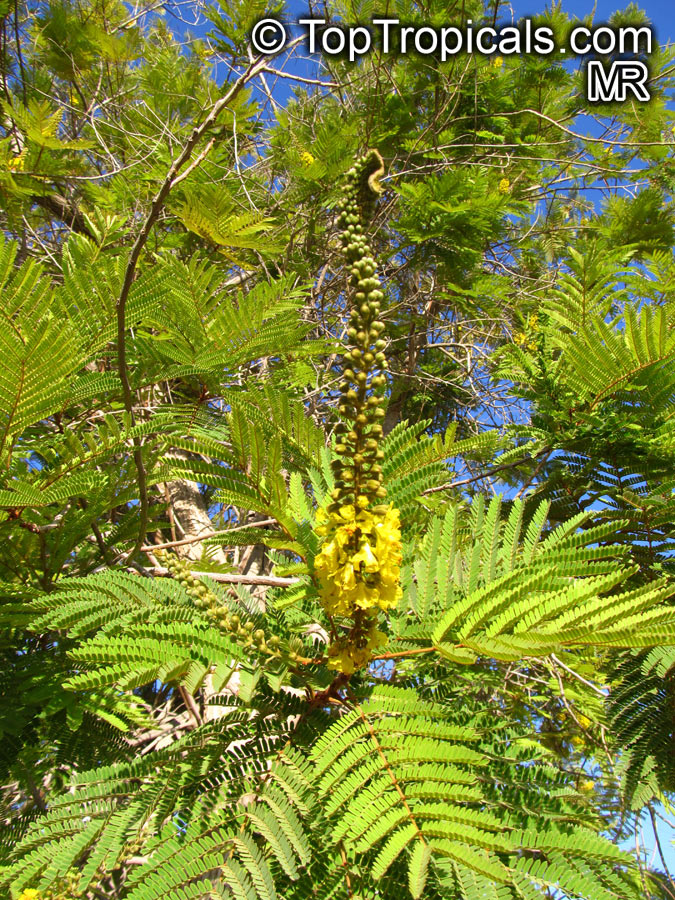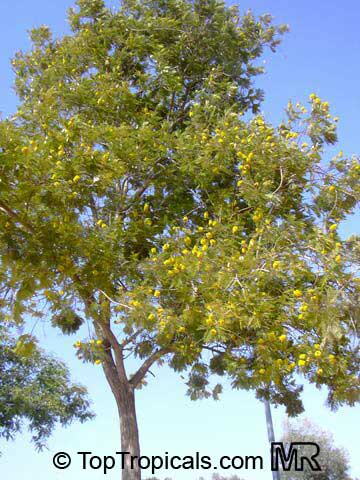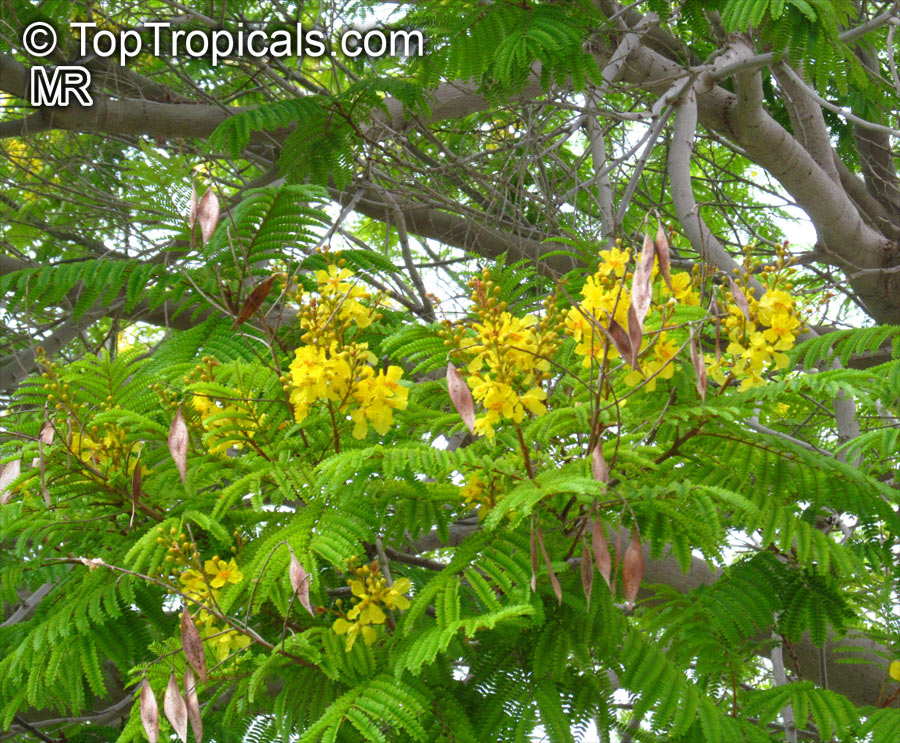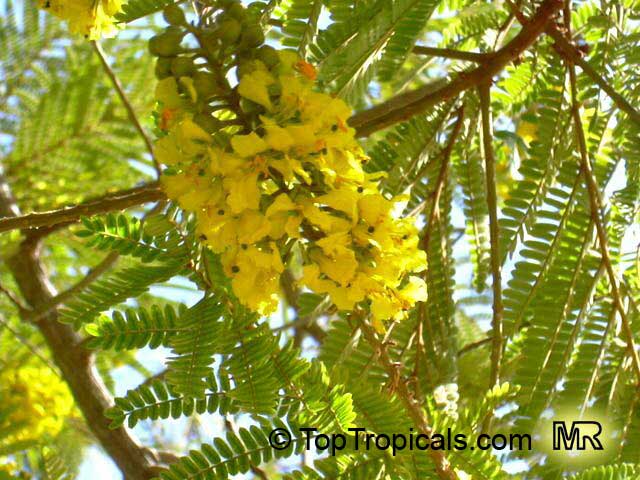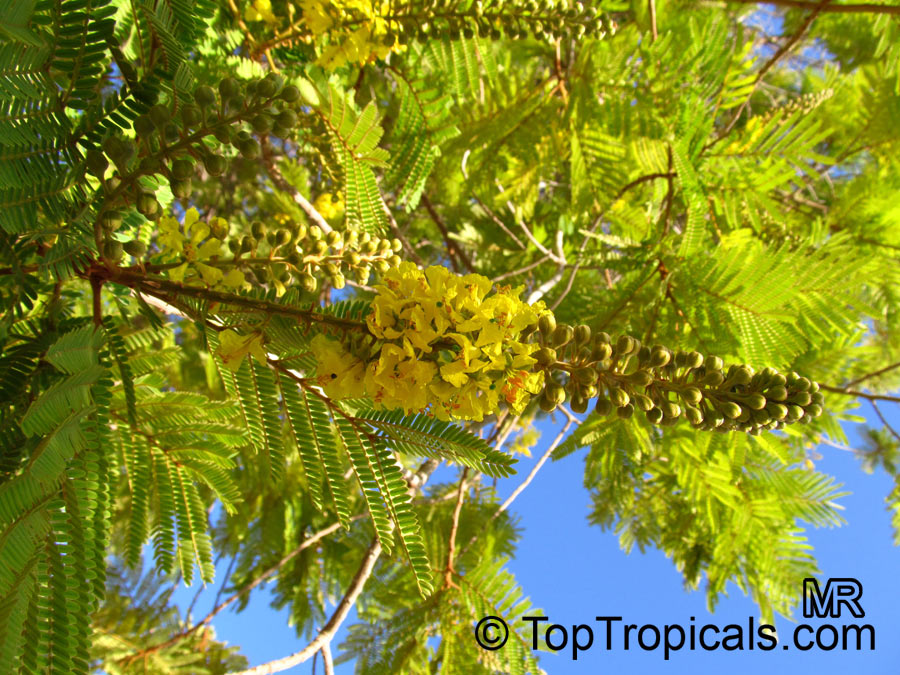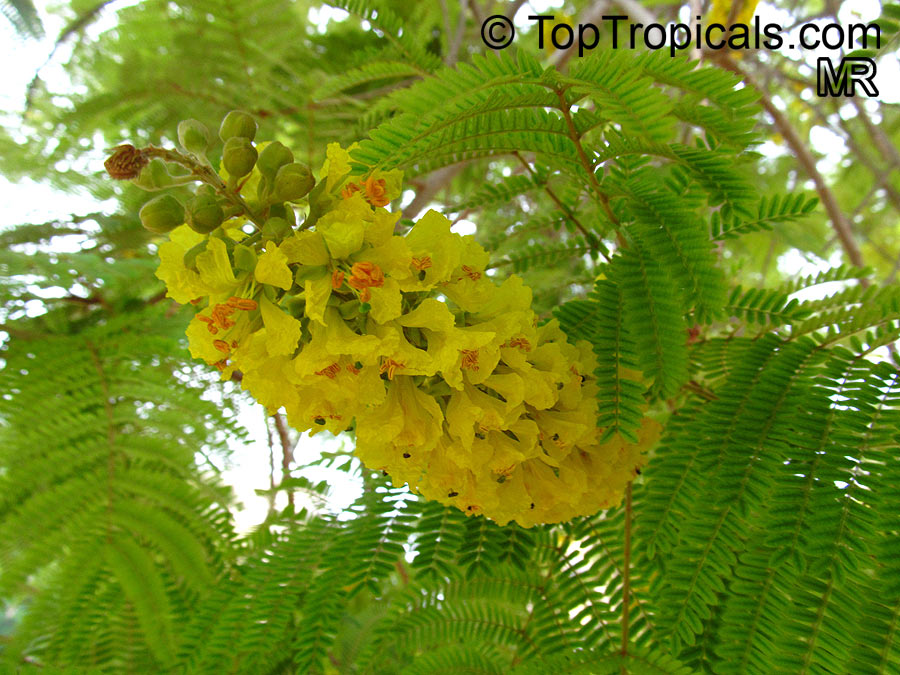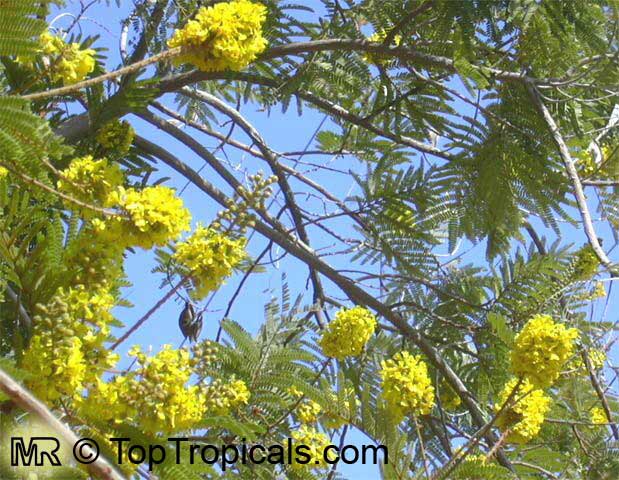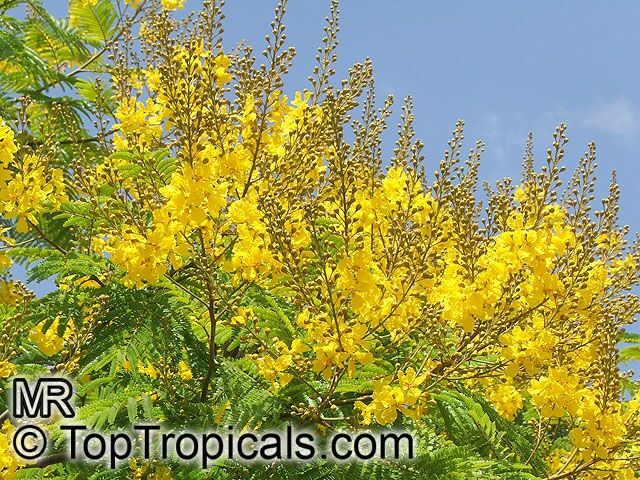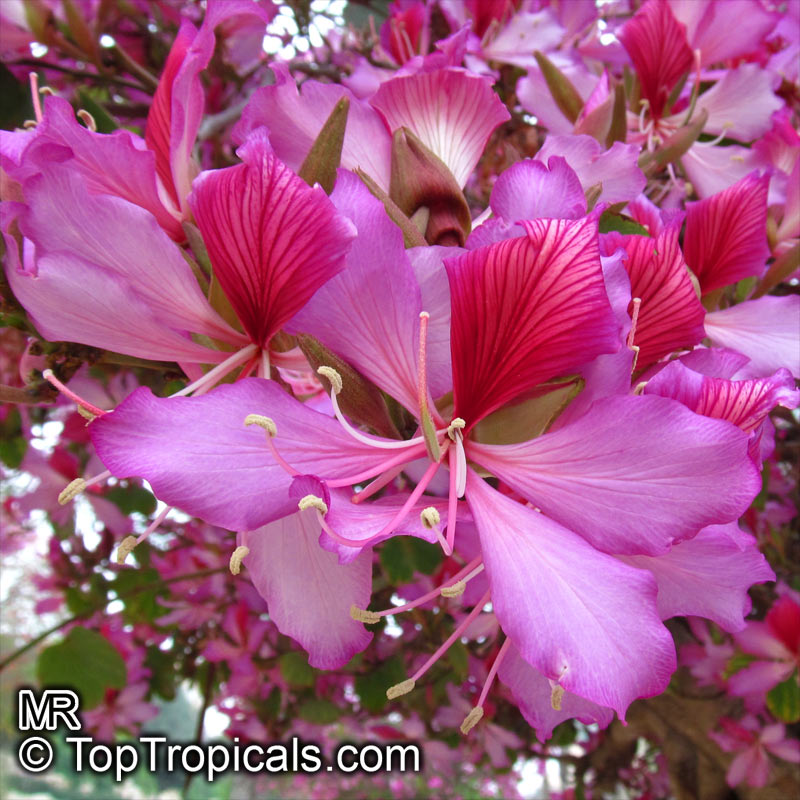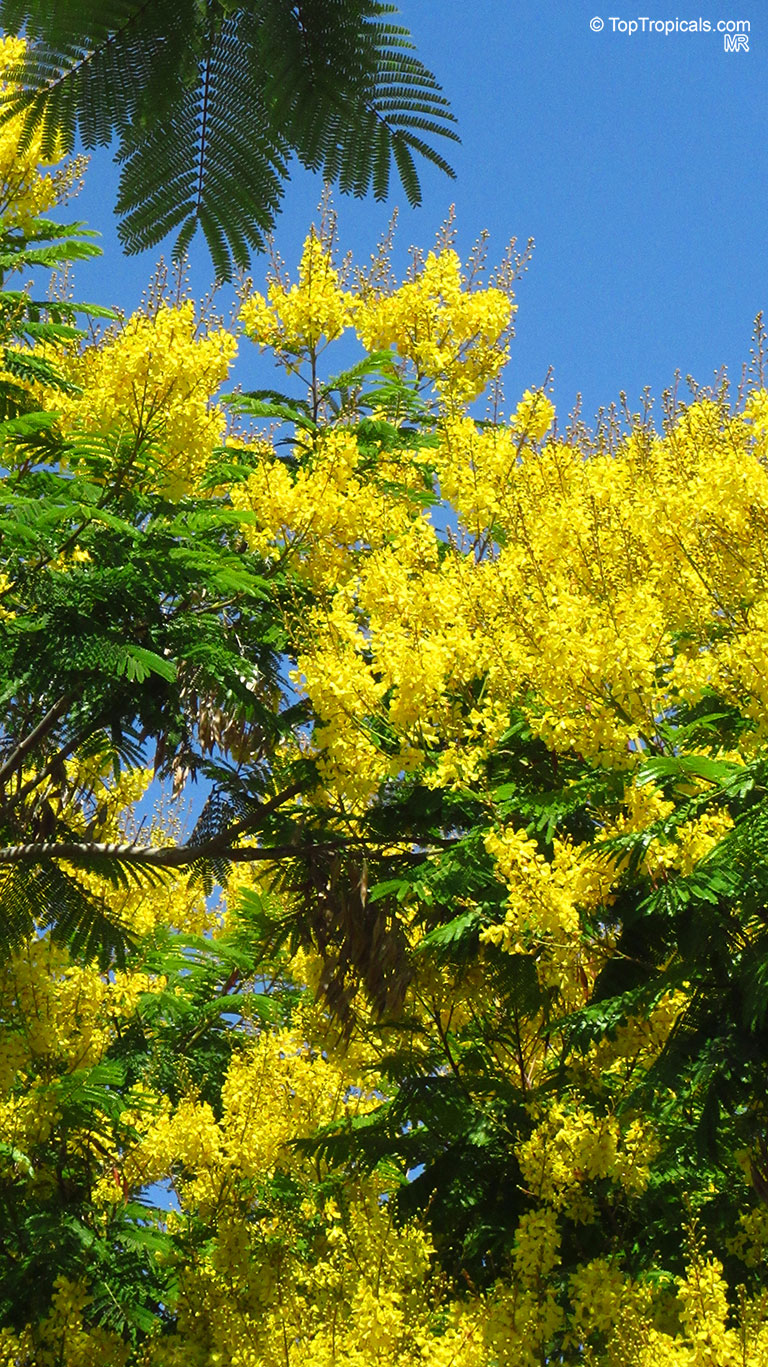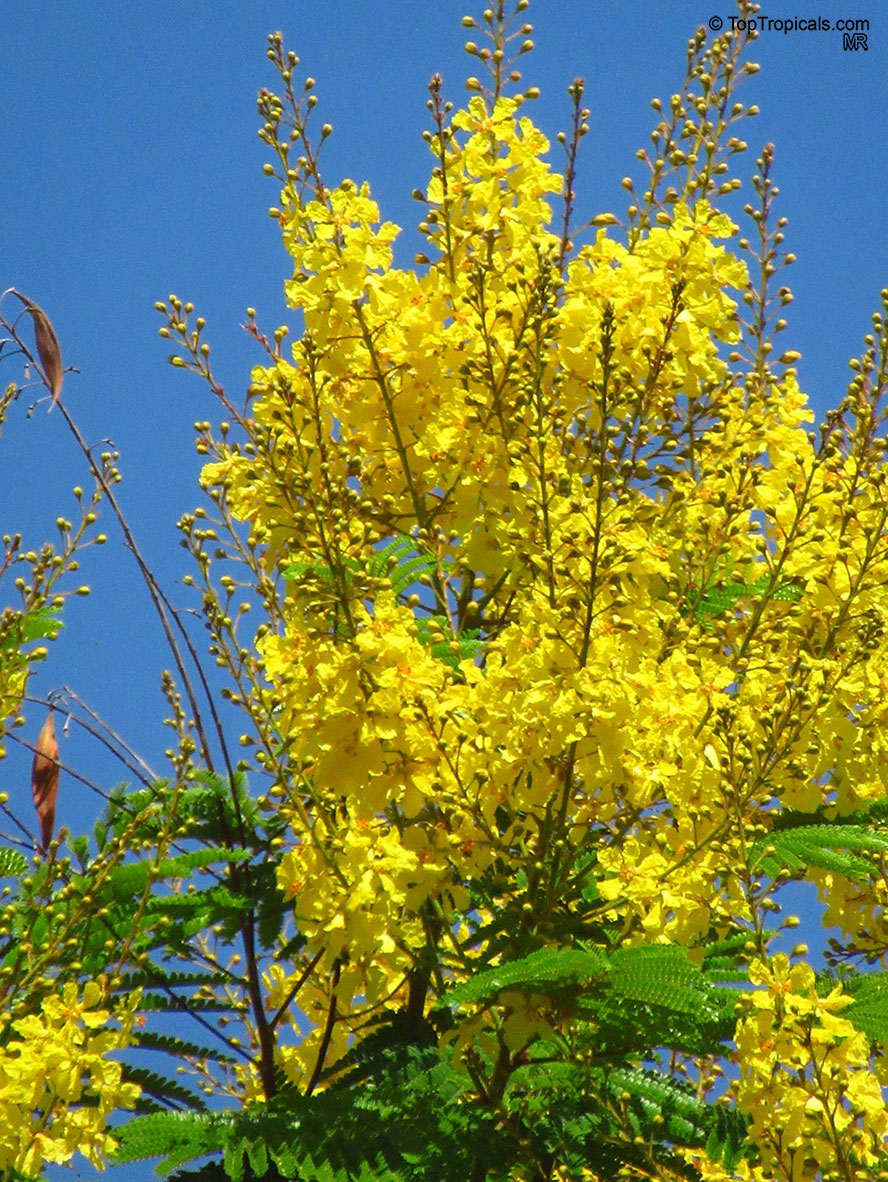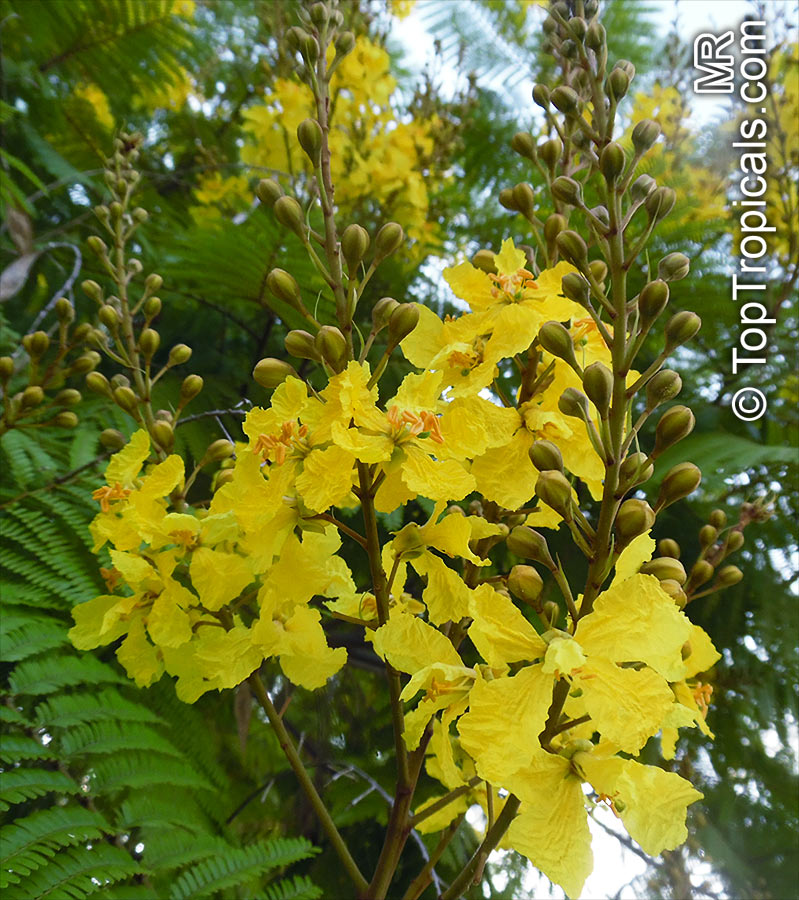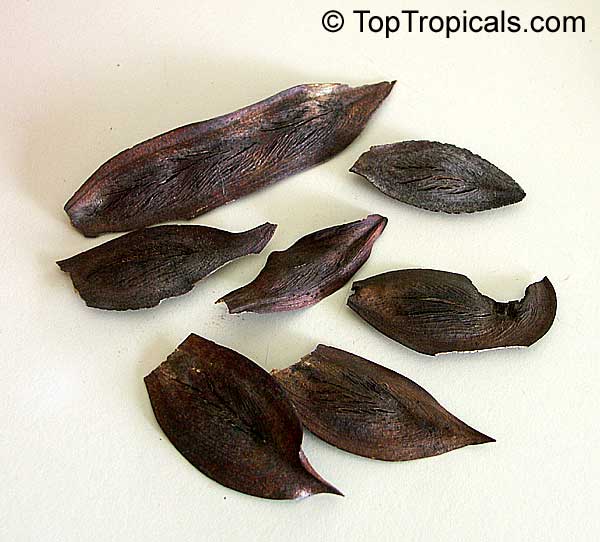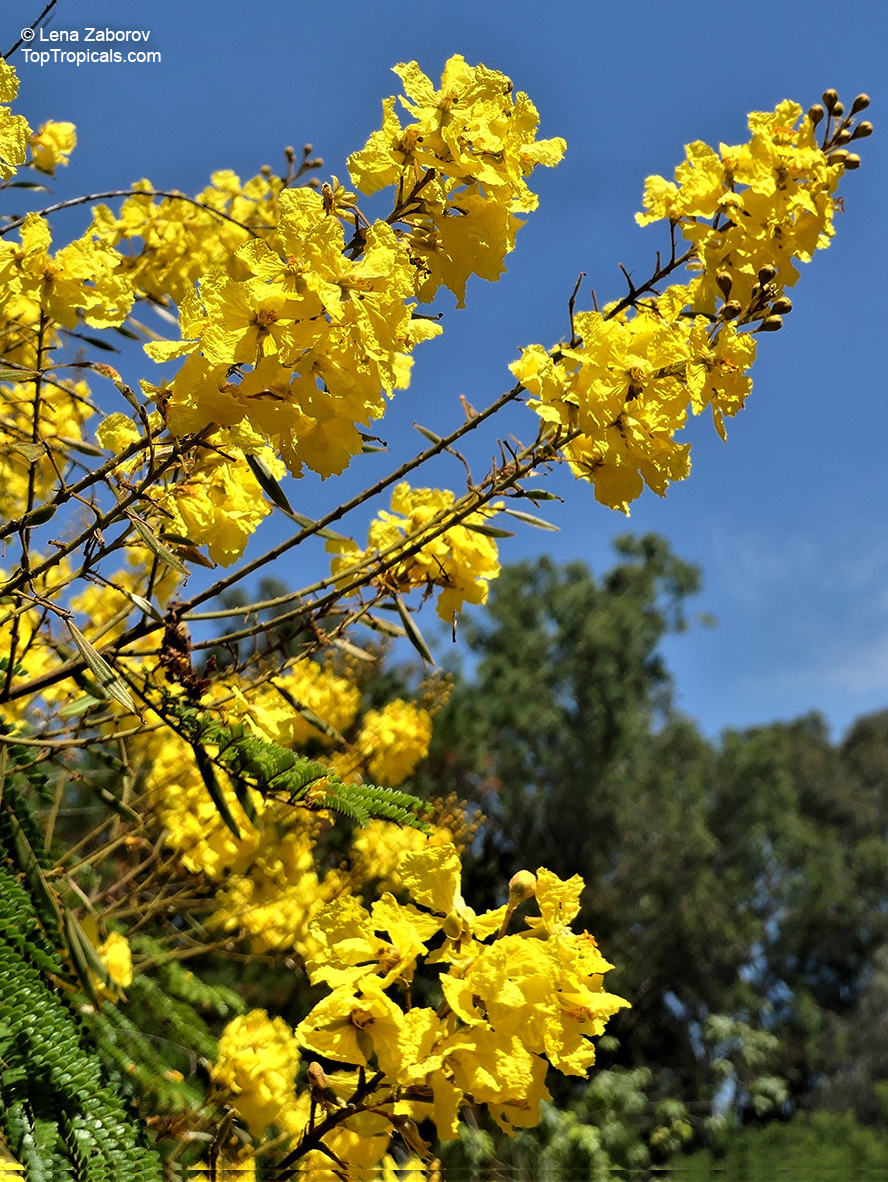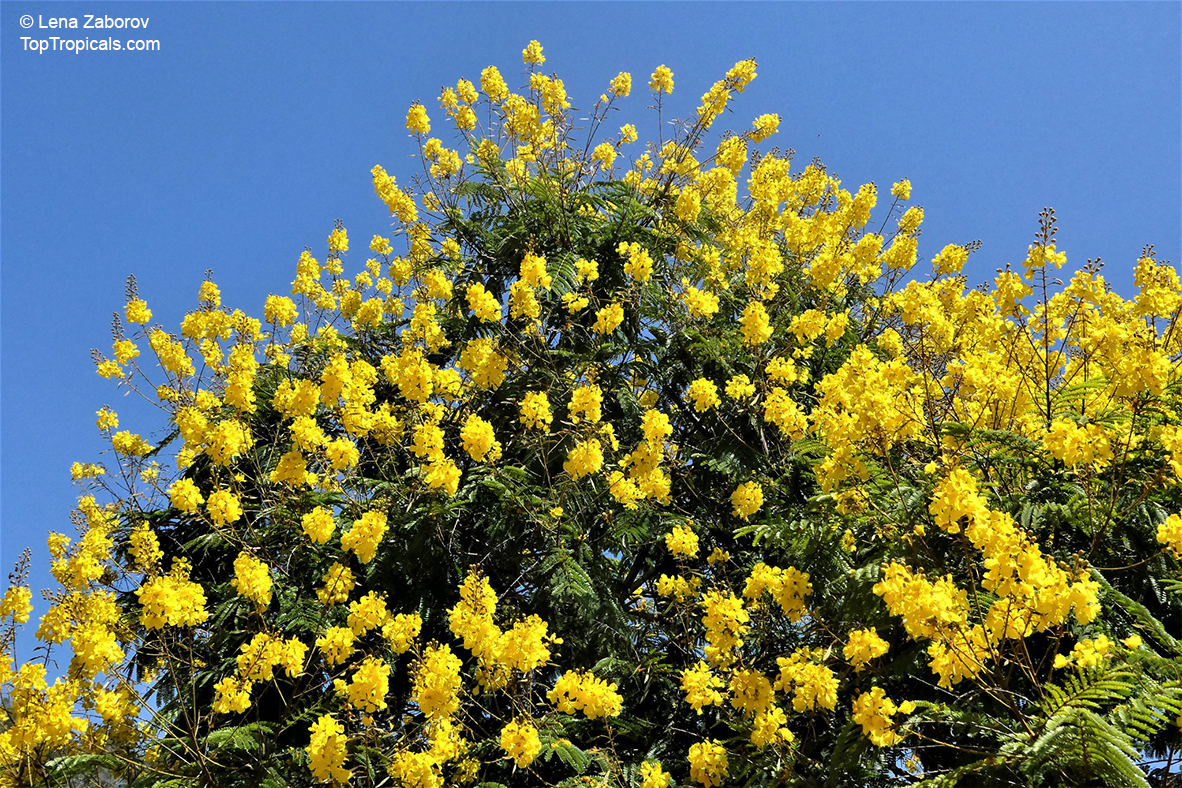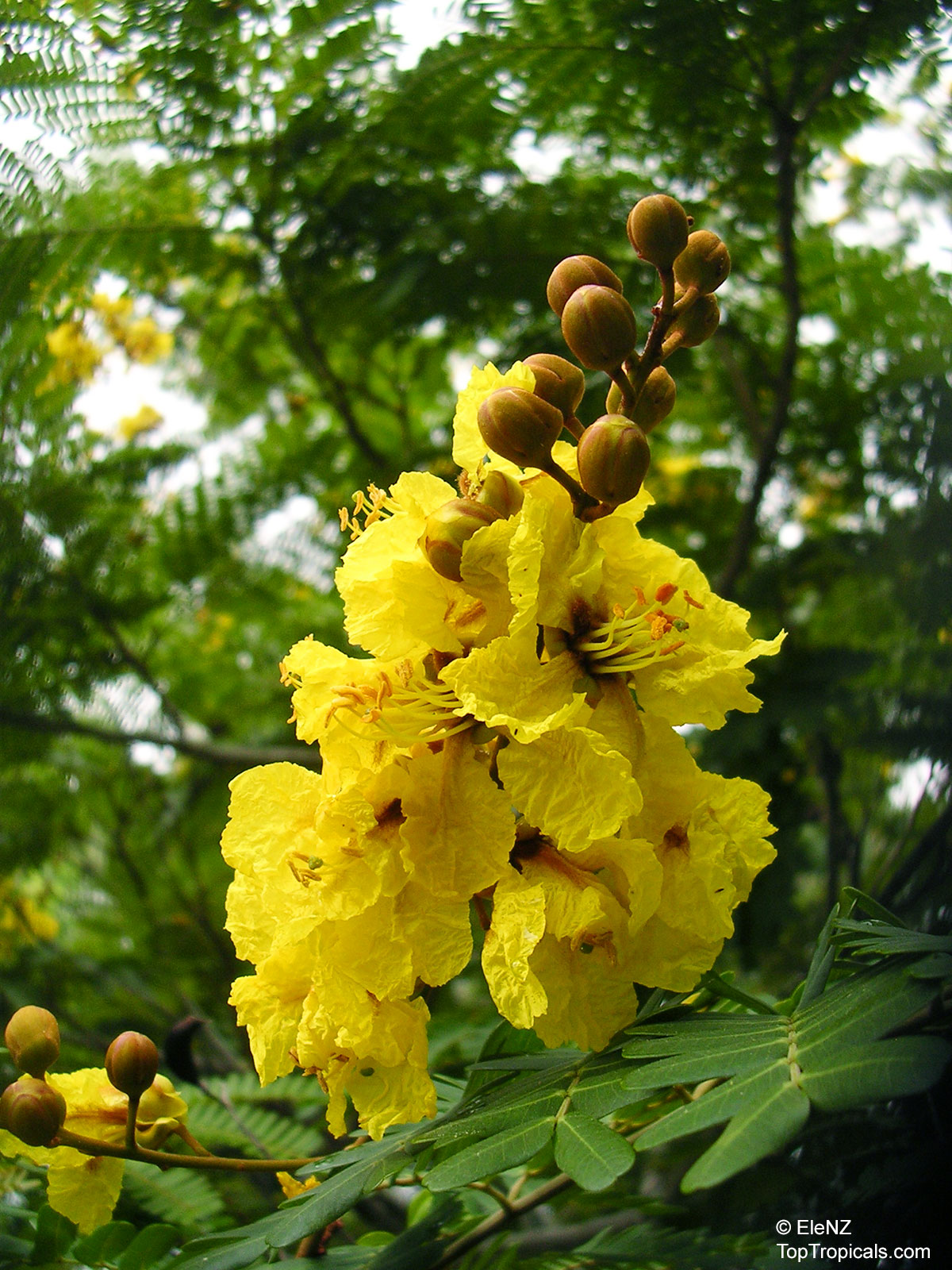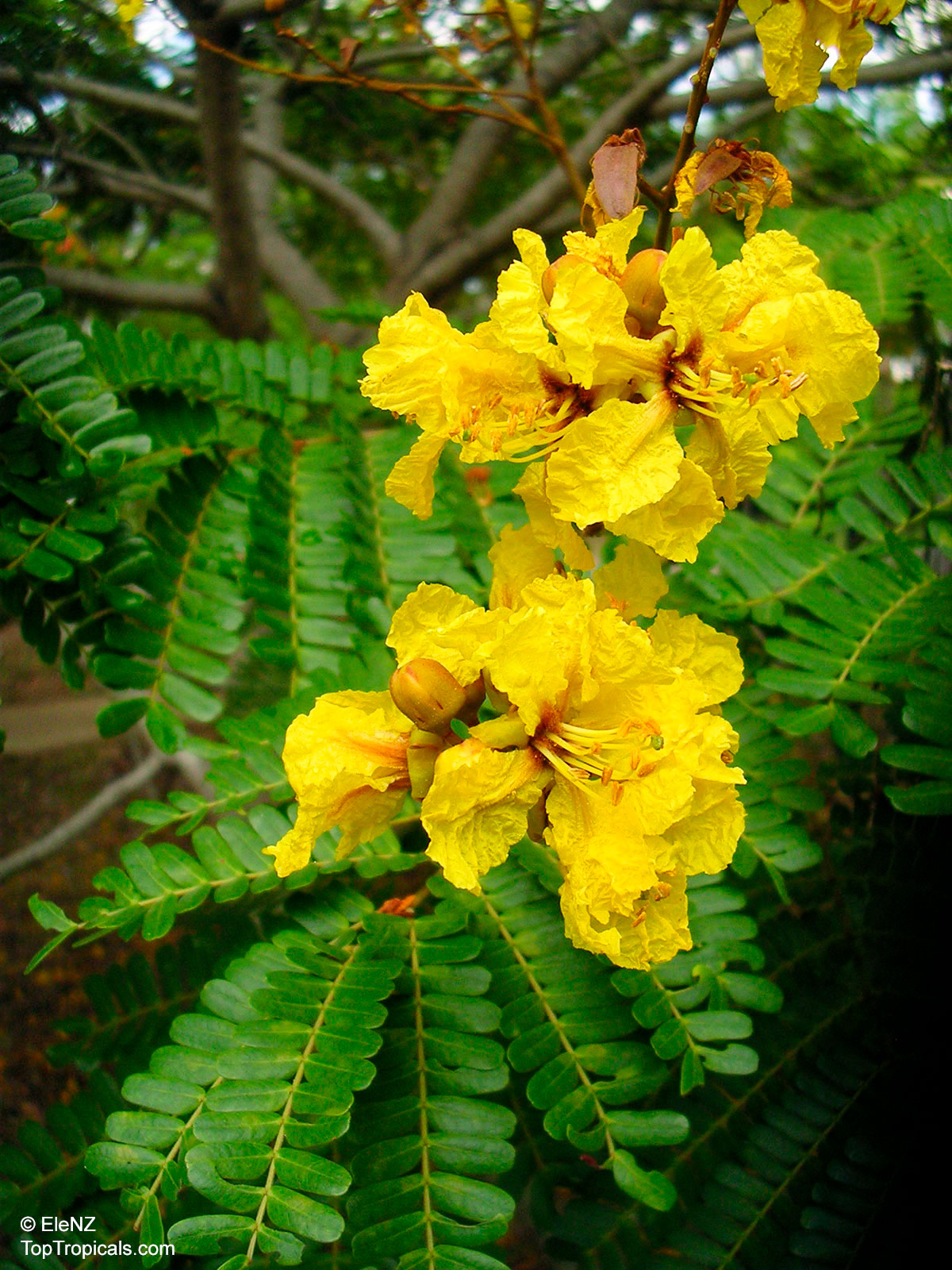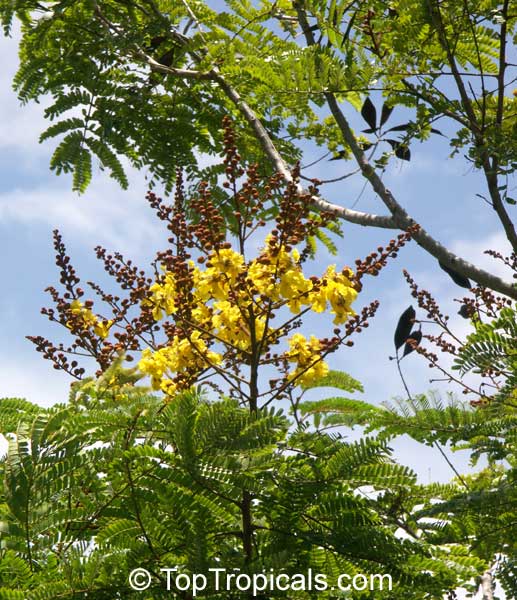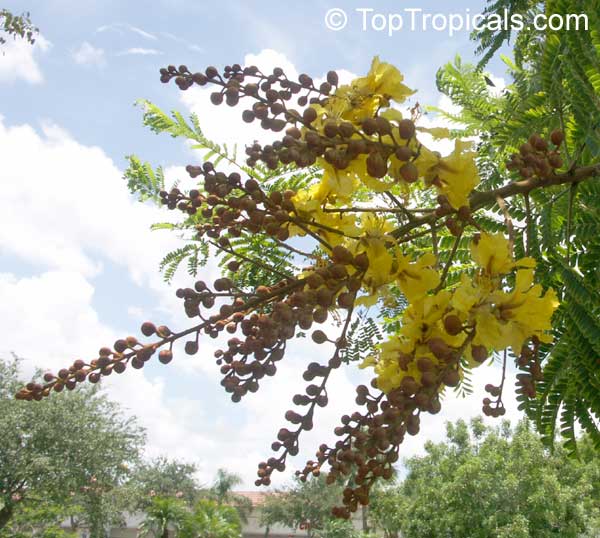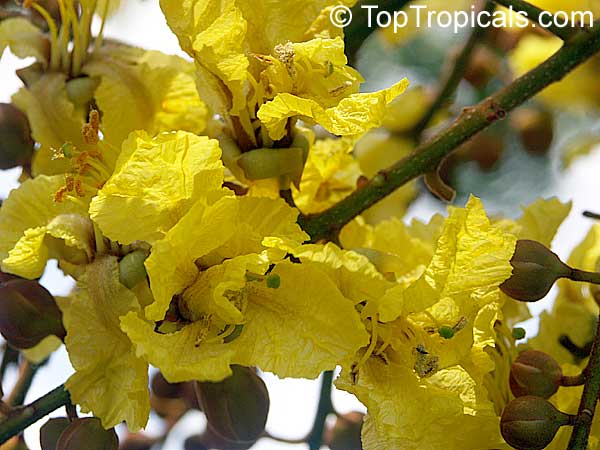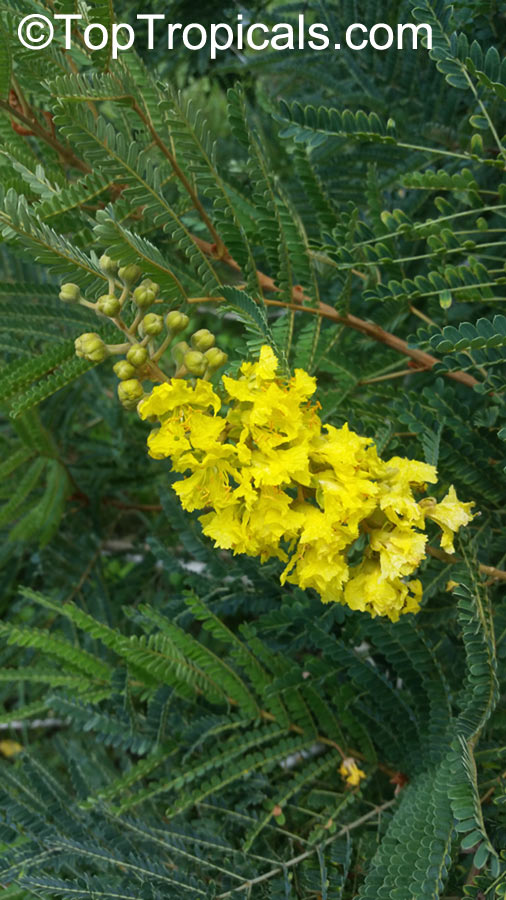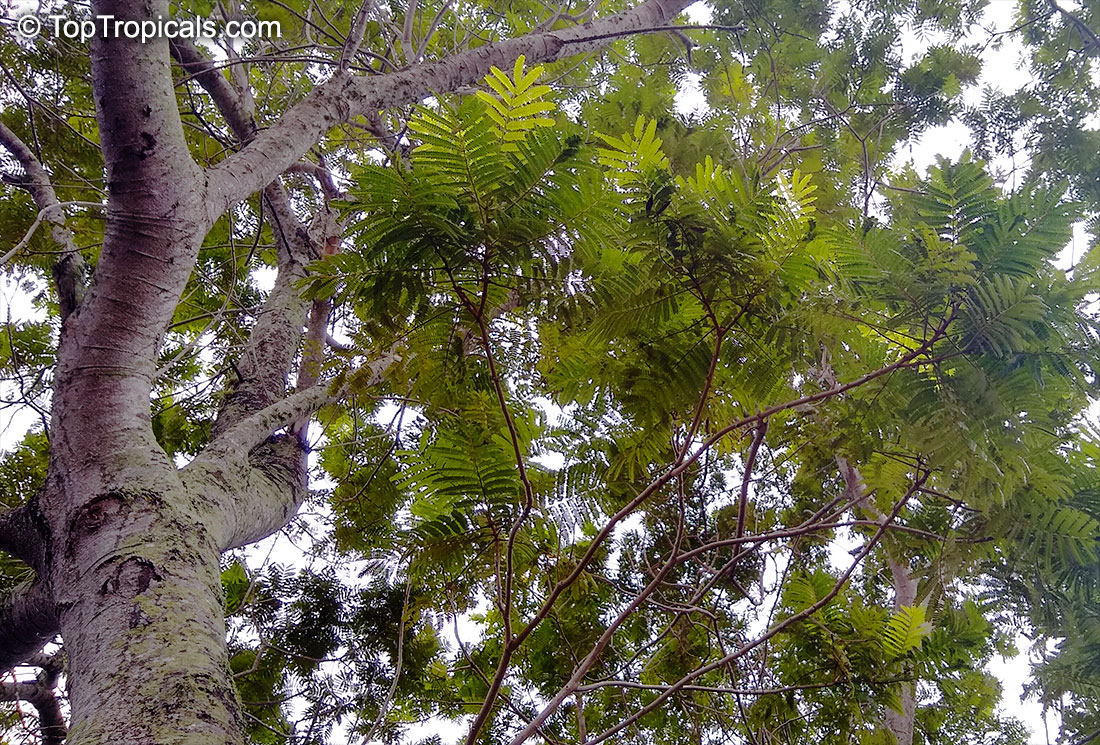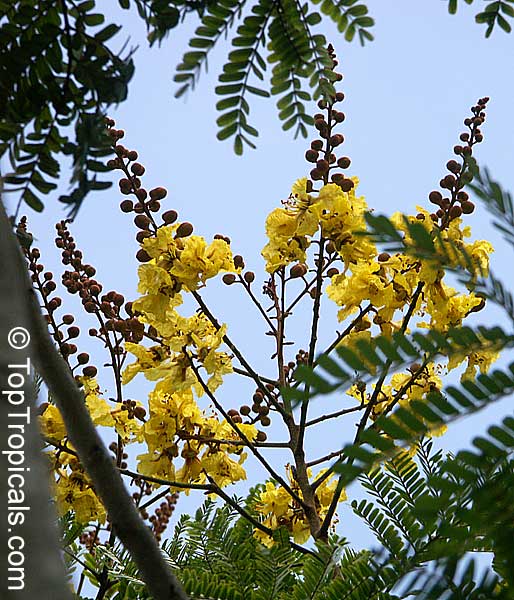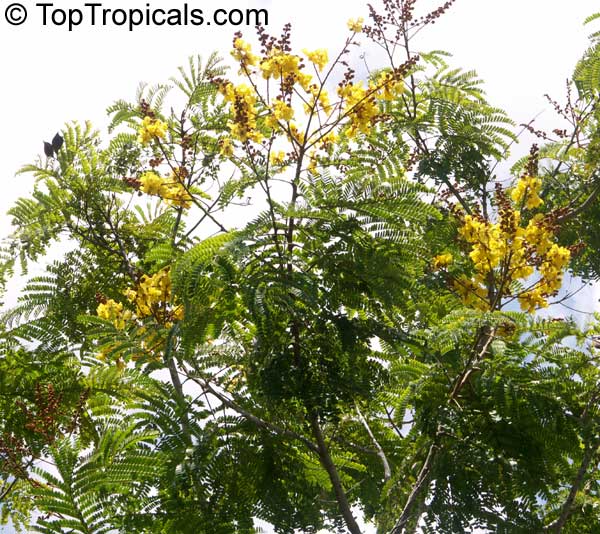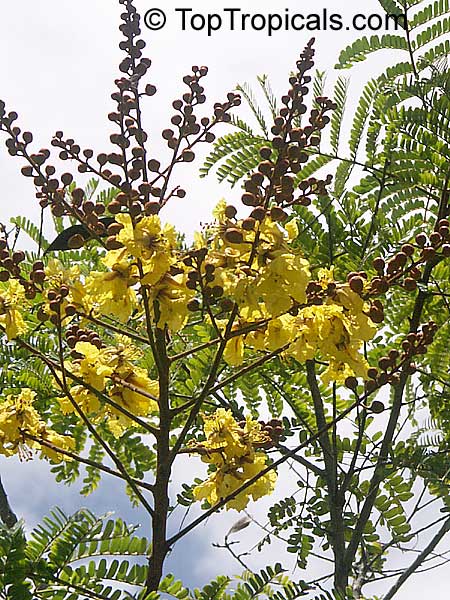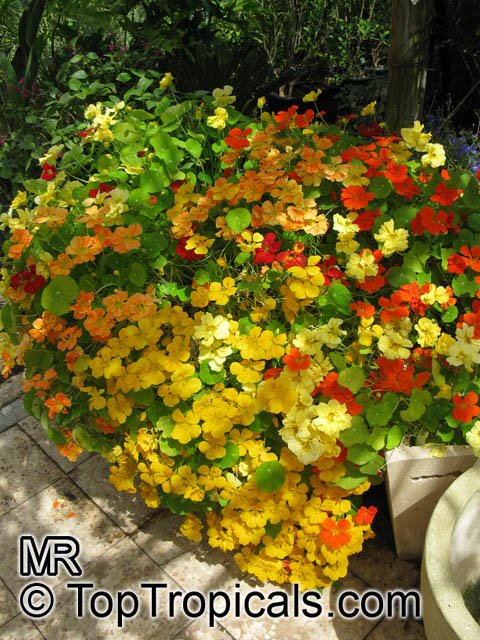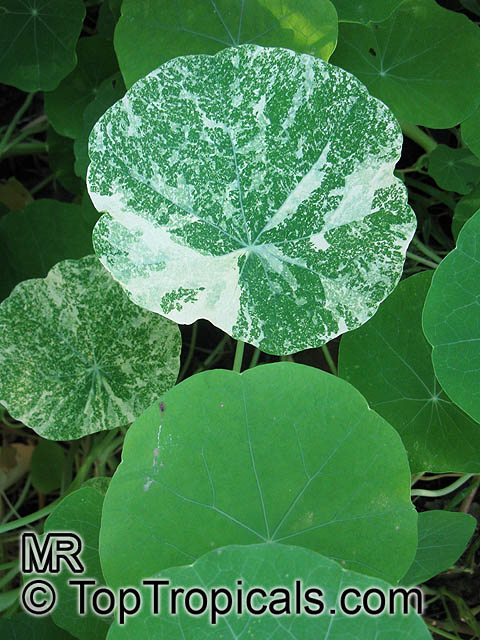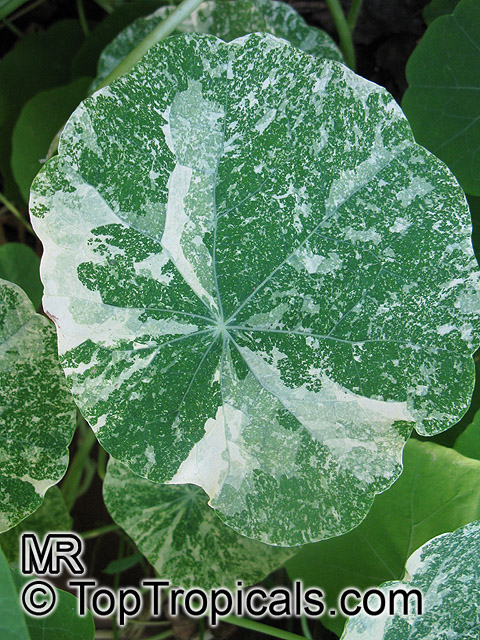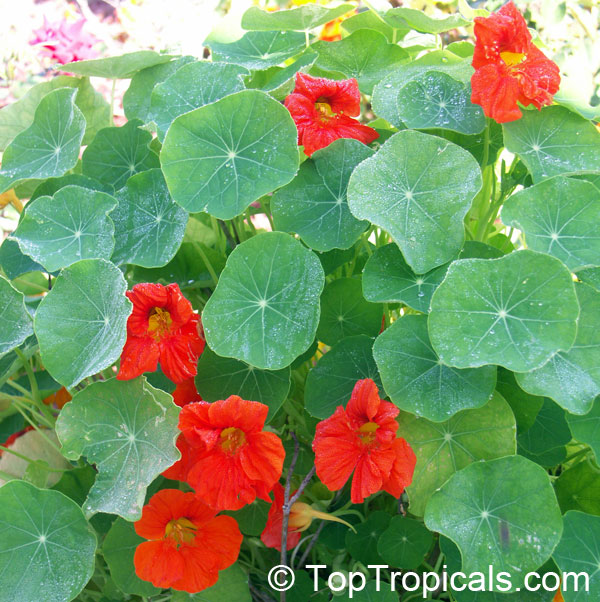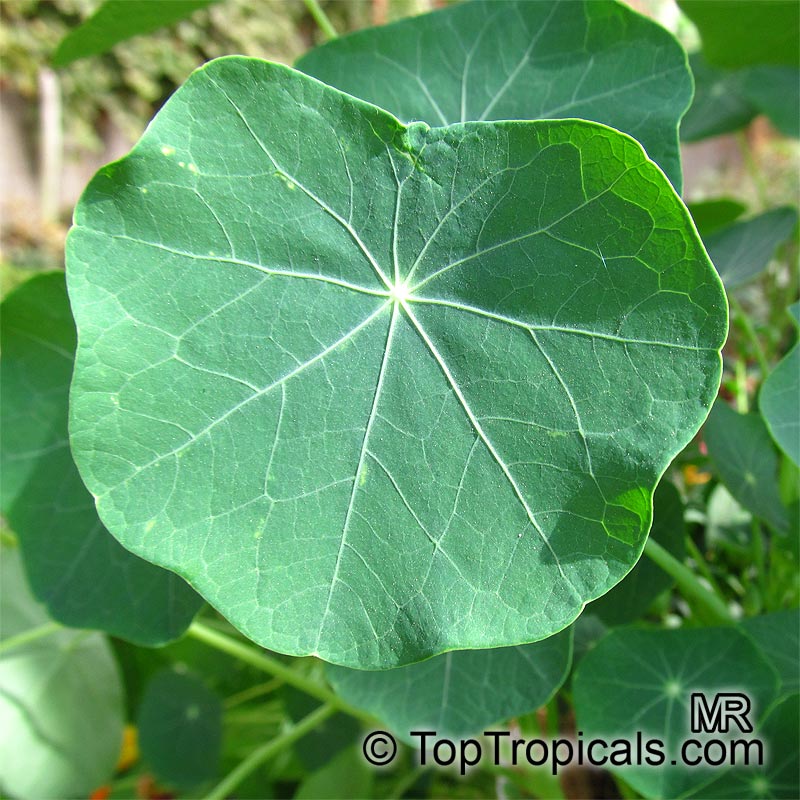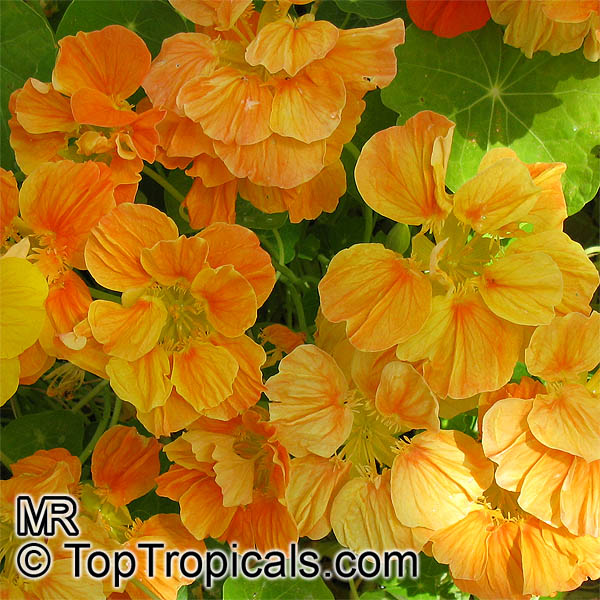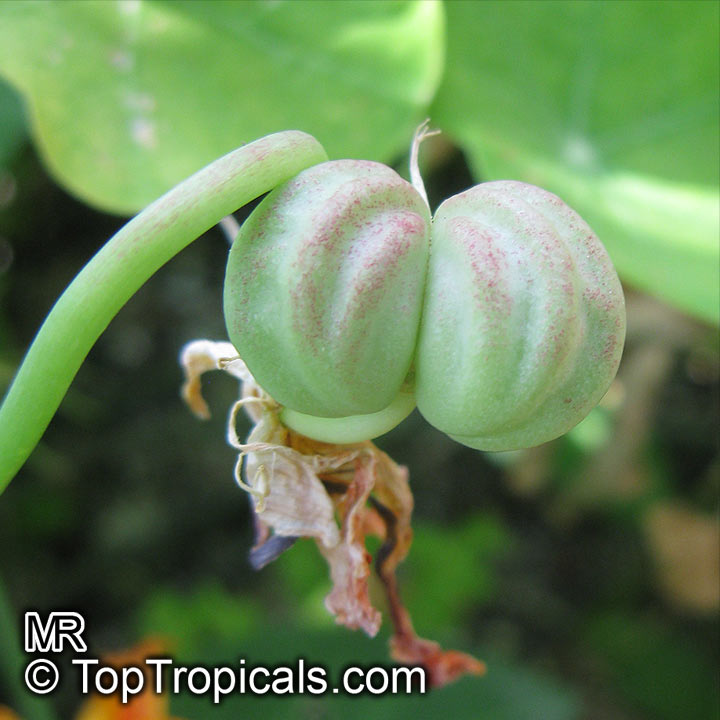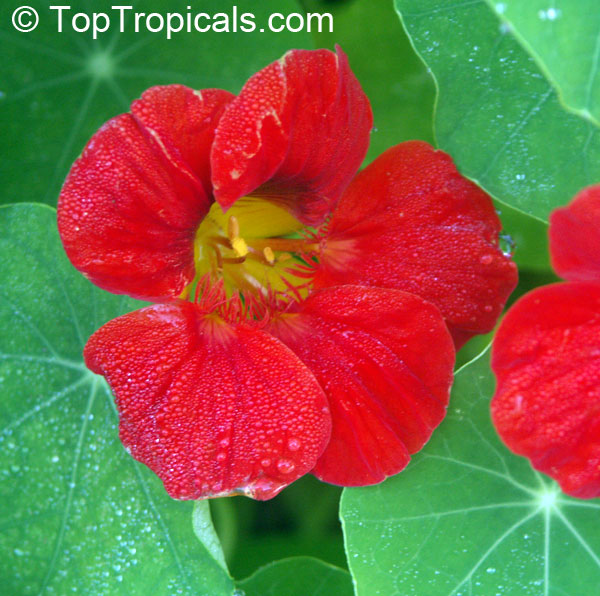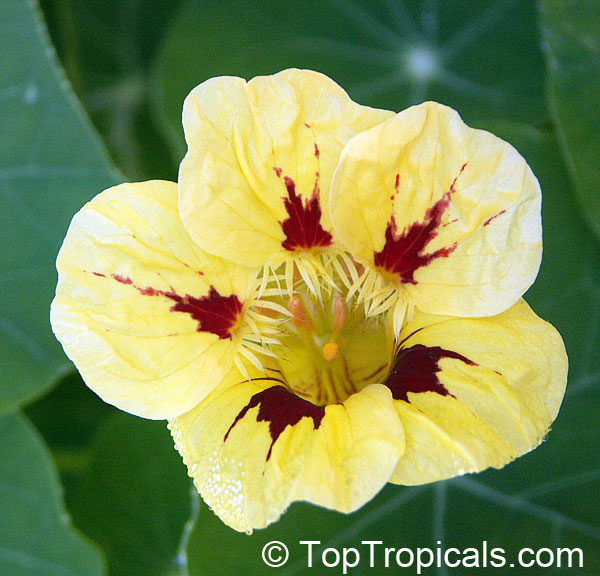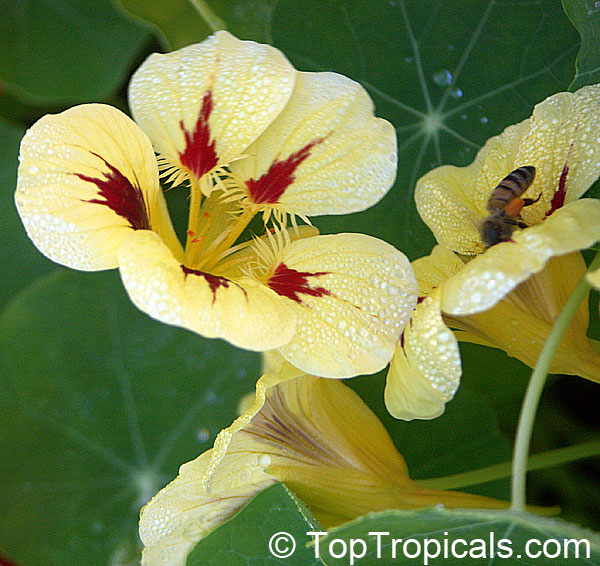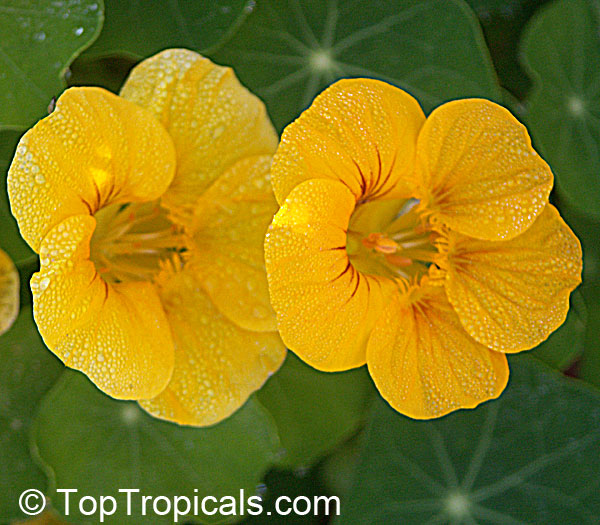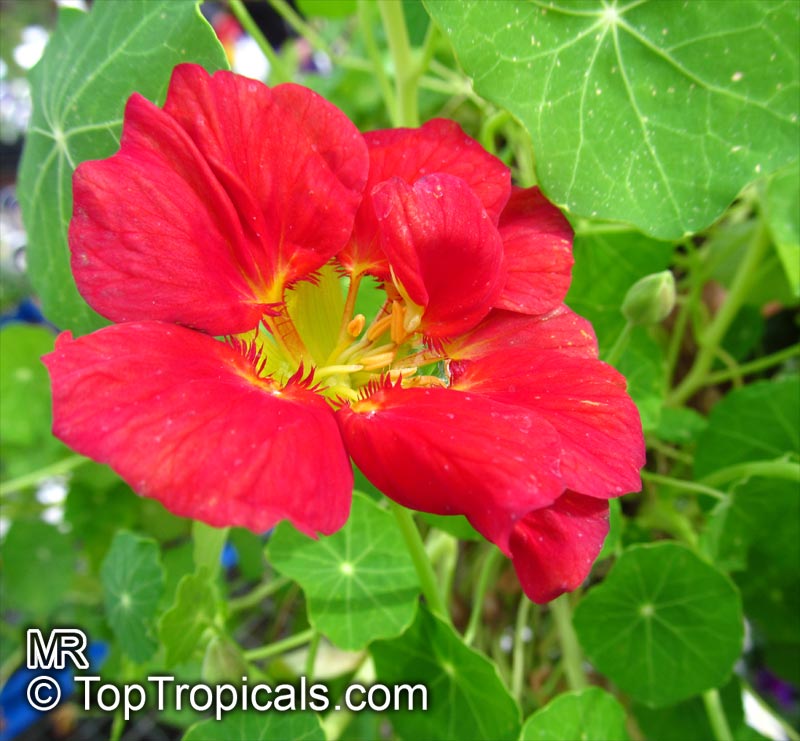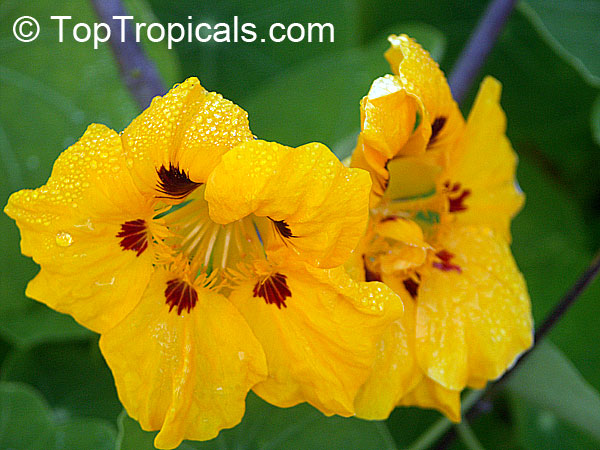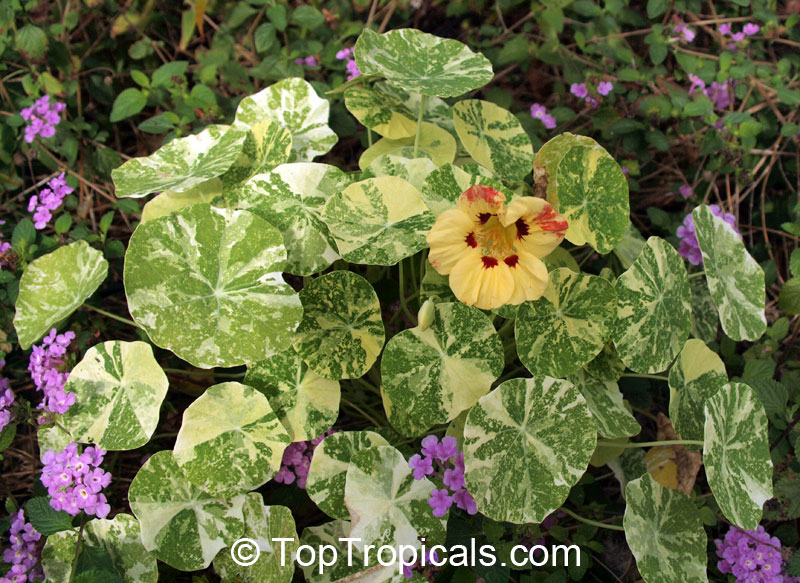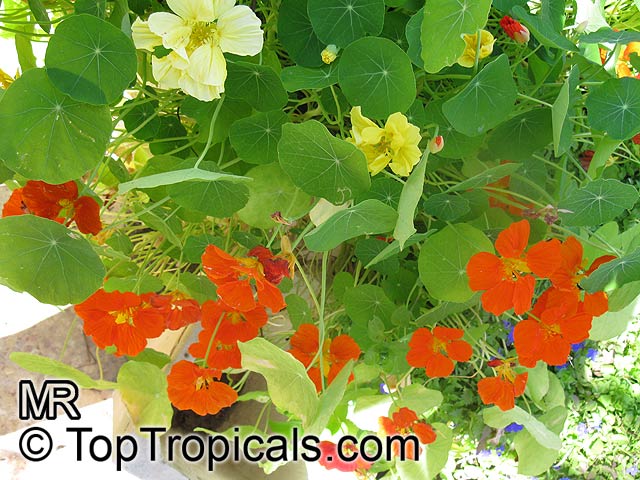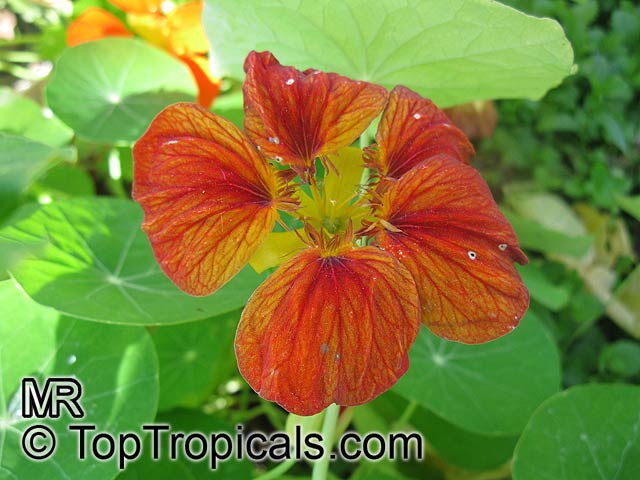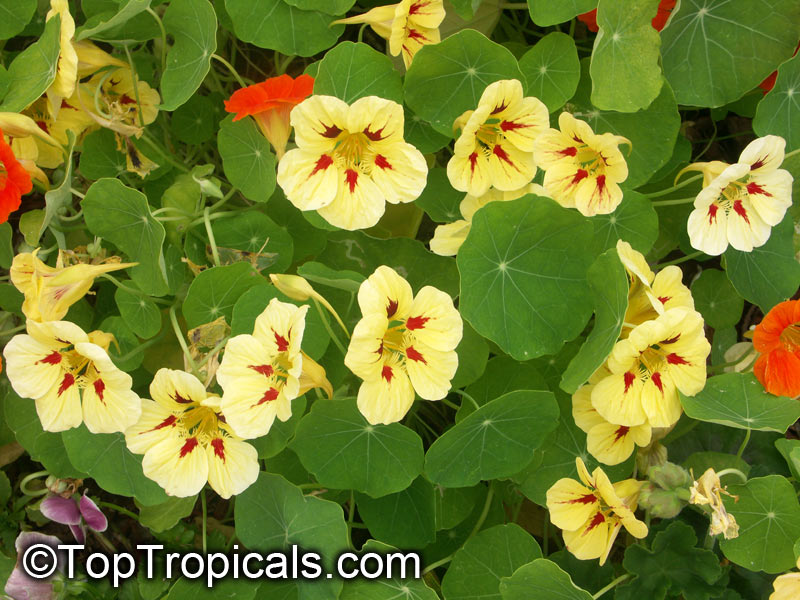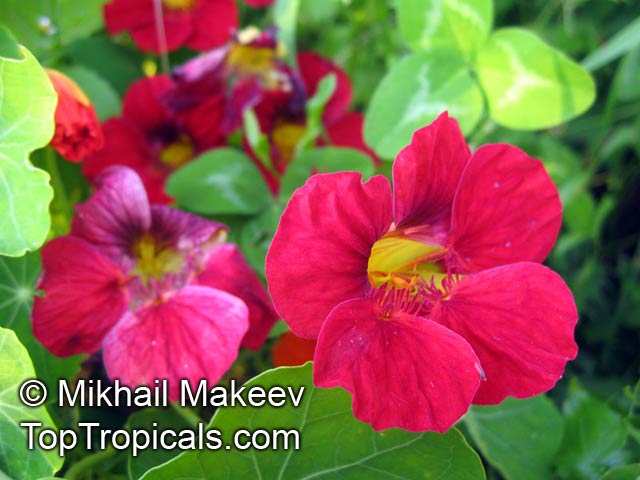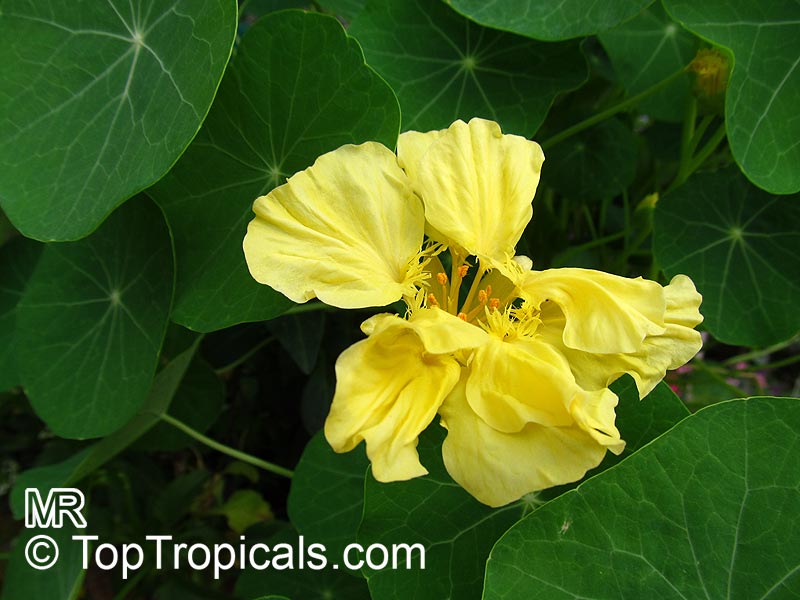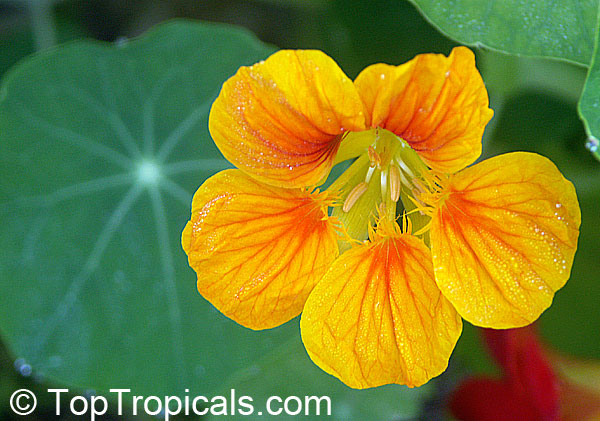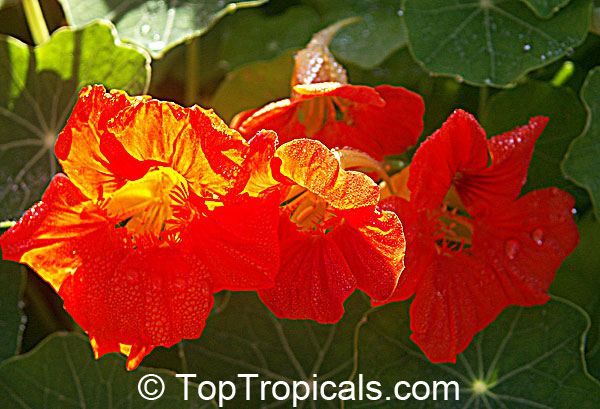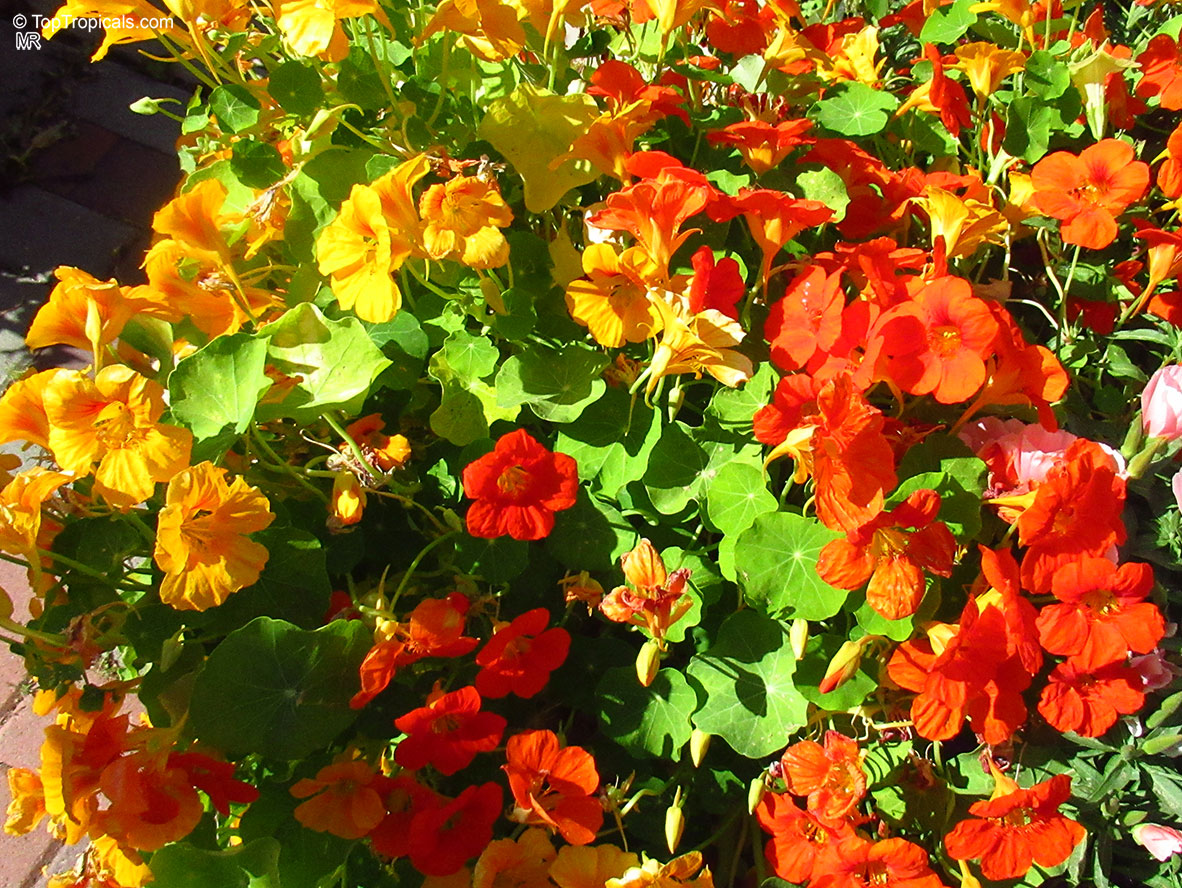Peltophorum - Search results
Top Tropicals Plant Encyclopedia
| Number of plants found: 5 |
Botanical name: Peltophorum africanum
Common names: African Wattle, Weeping Wattle
Family: Fabaceae
Subfamily: Caesalpinioideae
Origin: South Africa










Peltophorum africanum (African Wattle) is a native plant to South Africa and is widely known for its ethnomedical properties. It is a fast-growing small to medium-size semi-deciduous to deciduous tree that reaches heights of 10-20 ft with a spreading crown and bark that is smooth and grey on the young branches. The leaves are compound, bipinnate, with 4-7 pairs of pinnae bearing up to 23 pairs of feathery leaflets. They are oblong in shape, have a dull green top side and a pale green underside, and the apex is rounded with a fine, hairlike tip. The flowers are bright yellow and crinkled, about 5 inches in diameter and hang in dense clusters. They attract butterflies and hummingbirds. The tree is tolerant of seaside conditions and salt, and it's grown in USDA Zones 9-11. It is also a great tree for bonsai, as it develops an adult shape and thick corky bark in just 2-4 years, with leaves that are much reduced.
When growing Peltophorum africanum, it should be planted in a well-drained soil in full sun or semi-shade. It needs moderate water and is frost-resistant and drought-tolerant. When grown as a bonsai tree or for shade protection, it needs protection for the first 2-3 years and should be watered during dry spells. In cold regions, it can be grown in pots and needs frost protection, regular watering, good drainage, and should be placed in a sunny location. It also likes to have its roots shaded from direct sunlight.
Botanical name: Peltophorum dubium
Common name: Yellow Poinciana
Family: Fabaceae
Subfamily: Caesalpinioideae
Origin: North America to Caribbean






Peltophorum dubium (USDA hardiness zone 9b)is similar to Peltophorum pterocarpum (USDA hardiness zone 10b).
Botanical names: Peltophorum pterocarpum, Caesalpinia ferruginea, Caesalpinia inermis, Inga pterocarpum
Common names: Golden Flamboyante, Yellow Flame Tree, Yellow Poinciana, Copper pod tree, Copperpod
Family: Fabaceae
Subfamily: Caesalpinioideae
Origin: India and South East Asia
Hardiness: 30°F







Upright, semi - evergreen tree. It has dark green leathery leaflets, fragrant, yellow flowers and alongated seedpod. Shade tree on streets and roadsides or cover for cash crops in the humid tropics. Also grown as an ornamental. Sap wood soft and light, not durable and of little use, heartwood red, hard and strong. Good for carpentry, construction and cartwright's work. Bark contains tannins, giving a light yellow color to leather, tannins also present in leaves and wood. Medicinal uses: bark for dysentry, tooth powder, eye lotion, embrocation for pains and sores; the bark gives a dye of a yellow color. Can be used as a shade - or specimen tree.
USDA hardiness zone 10b. It is a fast-growing tree. Temperatures in the high 20's cause the leaves to drop but these are quickly replaced. Young trees flower in 2-3 years from seed.
Botanical name: Peltophorum sp.
Common name: Yellow Flame Tree
Family: Fabaceae
Subfamily: Caesalpinioideae
Hardiness: 30°F







Botanical name: Tropaeolum majus
Common names: Garden Nasturtium, Indian Cress, Monks Cress
Family: Tropaeolaceae
Origin: South America
Hardiness: 0°F














Tropaeolum majus (garden nasturtium) is a fast-growing herbaceous annual native to the Andes from Bolivia north to Colombia. Cultivated varieties have hybrid origin, with possible parent species including T. minus, T. moritzianum, T. peltophorum, and T. peregrinum. Plants form trailing or compact mounds, with rounded, shield-shaped leaves attached at the center. The showy flowers, in shades of yellow, orange, and red, appear over a long season and are both ornamental and edible. Leaves and flowers have a peppery flavor and are commonly used fresh in salads and as colorful garnishes. Seeds can be pickled as a caper substitute.
Grow nasturtiums in full sun with moist, well-drained soil. Compact forms stay around 12 in tall and make colorful borders, while trailing types can reach several feet and are suited to hanging baskets, window boxes, or ground cover. The plants are low-maintenance, tolerate poor soils, and may self-seed in mild climates. Hardy as an annual in most regions; perennial in frost-free areas.
Nothing found
